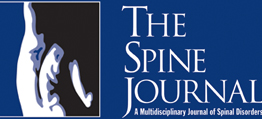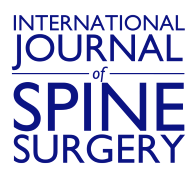
Abstract
BACKGROUND CONTEXT: Heterotopic classification (HO) can occur after treatment with cervical total disc replacement (TDR). In severe cases, HO can limit the range of motion, and result in fusion of the segment. The long-term effects of HO resulting in unintended fusion have not been analyzed.
PURPOSE: To study the safety and effectiveness of TDR after onset of motion-restricting HO (Grade 4: TDRf) to ACDF for the treatment of cervical degenerative disc disease.
STUDY DESIGN/SETTING: Post hoc analysis of TDR patients with Grade 4 HO compared to a matched group of patients with ACDF and mobile TDR. All patients were from a prospective, randomized, multicenter clinical trial.
PATIENT SAMPLE: The original study cohort consisted of 599 patients treated with one or two-level TDR or ACDF. The inclusion criteria included a diagnosis of symptomatic cervical degenerative disease at one or two contiguous levels and no history of cervical spine surgery.
OUTCOME MEASURES: Measured outcome included adjacent segment degeneration (ASD), subsequent surgery, Neck Disability Index (NDI), VAS neck and arm pain, SF-12 MCS/PCS, range of motion and sagittal alignment.
METHODS: TDR patients were treated with Mobi-C© artificial disc (Zimmer Biomet, Austin, TX). ACDF with allograft and anterior plate was the control treatment. Outcomes were collected preoperatively and postoperatively up to 84 months. Independent radiologists conducted all radiographic evaluations. HO was classified using the system adapted from McAfee and Mehren. Outcomes after Grade 4 HO were compared to mobile TDR (TDRm) and ACDF patients matched by gender and operated level (C4-C7).
RESULTS: At 7 years, Grade 4 HO occurred in 46 of 413 TDR patients (11%). Mean time to Grade 4 HO was 39.7 months (11-87 months). Mean follow-up after first occurrence of Grade 4 HO was 36.4 months (range 0-75 months). The TDRf patients were compared to 152 ACDF patients and 300 patients with mobile TDR (TDRm). At last follow-up, radiographic ASD (KL grade ¾) was significantly higher in TDRf compared to TDRm (29.6% vs 17.4%; p=.03), but TDRf patients had less ASD than ACDF patients (29.6% vs 38.6%; p=.08). Survival curvs showed similar freedom from Grade 4 ASD for TDRf compared to ACDF (87.3& vs 92.6%; p=.20) at 72 months. Subsequent surgeries were lower for TDRf vs ACDF at the index level (0% vs 11.8%: p=.007), adjacent levels (4.4% vs 9.2%; p=.16), and for all subsequent surgeries (4.4% vs 15.8%; p=.025). For index level surgeries, the majority of procedures in ACDF patients were due to pseudarthrosis, a major cause of reoperation after ACDF that would not occur in TDRf patients. Survival curves illustrated higher freedom from any subsequent surgery for TRDf compared to ACDF at 72 months (89.2% vs 83.3%; p=.23). At last follow-up, mean NDI was 17.7±19.3 for TDRm, 22.1±21.0 fir TDRf, and 22.5±20.6 for ACDF. Mean VAS neck pain was 18.7±26.9 for TDRm, 23.2±28.2 for TDRf, and 25.8±28.9 for ACDF. Segmental ROM in TDRf patients was similar to ACDF, and TDRf patients maintained sagittal alignment after fusion.
To Read The Full Article Click Here





